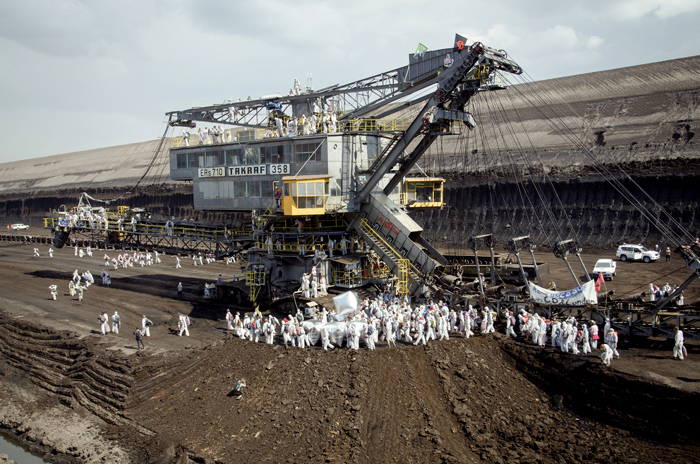Text by Katherine Ball with contributions from John Jordan.
Ende Gelände is an annual mass action of civil disobedience calling for “here and no Further” for fossil fuel extraction. From 13-15 May 2016, 3,000 demonstrators gathered in the Lausitz region of Germany to blockade the Welzow Sud Lignite Coal Mine, owned by Vattenfall.
Inflatable barricades were set up to block roads leading to train tracks transporting coal supplies. Made of silver inflatable cubes, the barricades prevented police from accessing railways occupied by thousands of demonstrators.
From the rail lines and forests, demonstrators descended into the coal mine and climbed onto the digging machines — forcing the mine to shut down due to health and safety regulations restricting the machines from operating when unauthorized persons enter the mine.
For three days, demonstrators held the blockade of the mine and railways delivering coal to the nearby power plant, also owned by Vattenfall. By preventing coal from being delivered, one unit of the of the Schwarze Pumpe Power Plant had to be completely shut down and the other unit reduced its production by 2/3. Because of the lack of supplies, 1300 MW of the dirtiest power was prevented from entering the power grid.
600 demonstrators entered the power plant, attempting to shut it down completely due to health and safety regulations. Inside the plant, demonstrators were attacked by riot police and pepper sprayed. The demonstrators attempted to leave the plant, frantically jumping over fences, running along an exit road, and breaking through police lines. 130 people were kettled by the police, photographed for three hours, held until 4am in the cold and wind (the temperature dropped 4-6 degrees celsius at night), and finally arrested and brought to the local jail in Cottbus, Germany. Meanwhile, the coal railway and mine blockades continued. The cubes were played with inside the kettle, bringing fun and conviviality into a scenario intended to dehumanize. At one point, one cube escaped the kettle and the police refused to give it back. So demonstrators inflated another cube, chanting: “We are inflatable, another cube is possible!” (a play on “We are unstoppable, another world is possible.” )
The Ende Gelände actions were part of a larger call to put an end to burning lignite coal in Germany. Lignite is the dirtiest form of coal. It emits far more CO2 than other fossil fuels. Lignite is the main reason why German CO2 emissions have started rising. In Germany, lignite burning is higher today than at any time since the 1990s. No other nation burns so much.
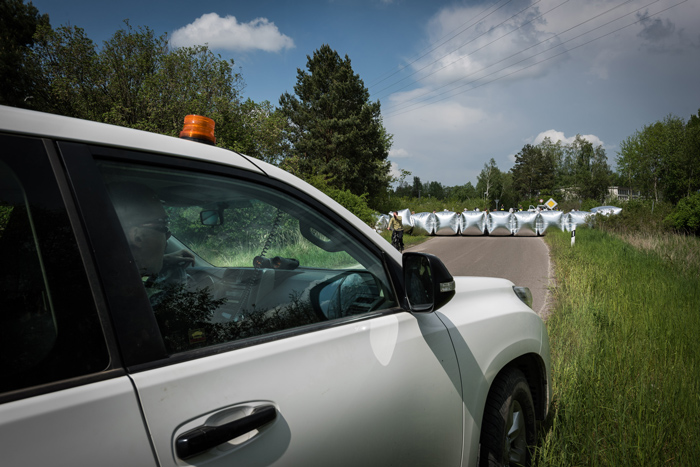 Photo credit: 350.org / Paul Levis Wagner
Photo credit: 350.org / Paul Levis Wagner
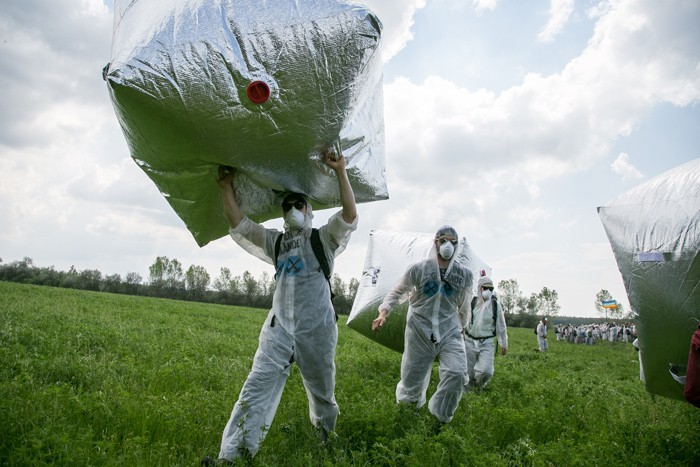 Photo credit: Fabien Melber
Photo credit: Fabien Melber
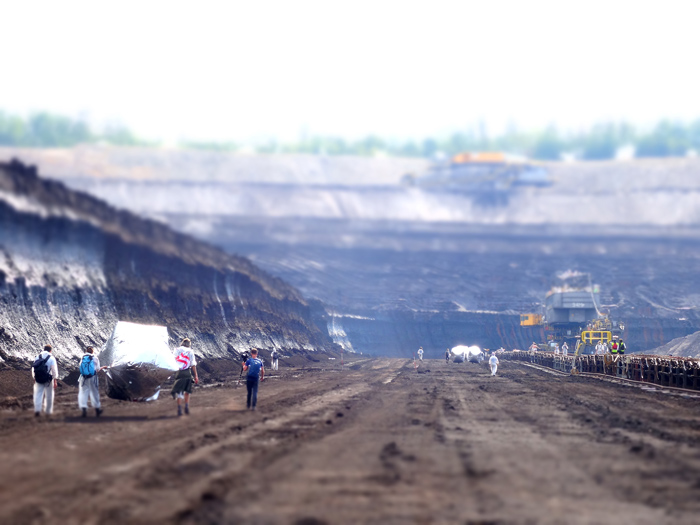 Photo credit: Kevin Buckland
Photo credit: Kevin Buckland
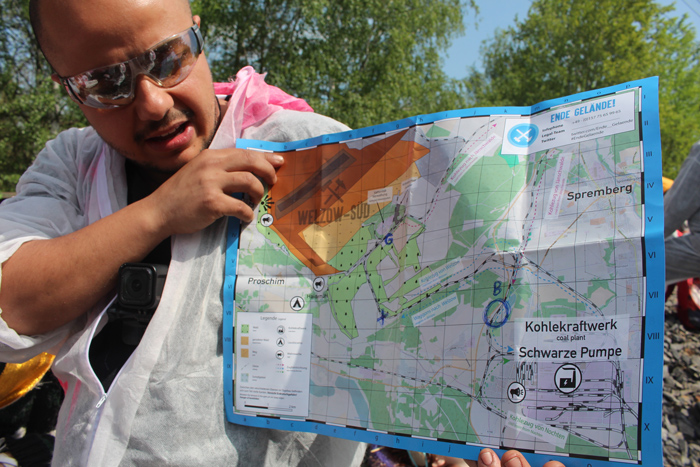 Photo credit: Tools for Action / Katherine Ball
Photo credit: Tools for Action / Katherine Ball
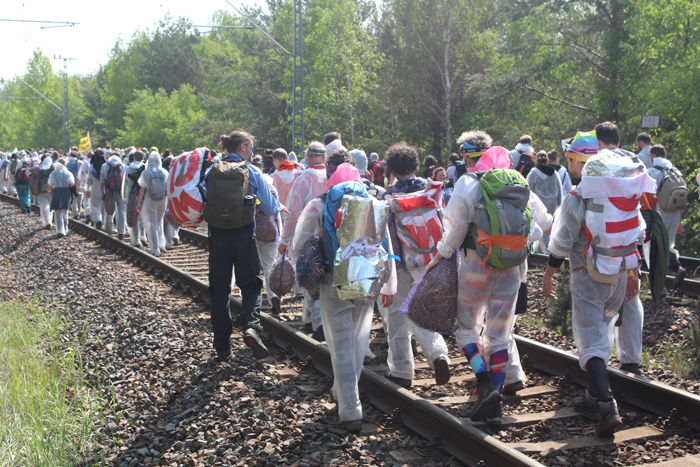 Photo credit: Tools for Action / Katherine Ball
Photo credit: Tools for Action / Katherine Ball
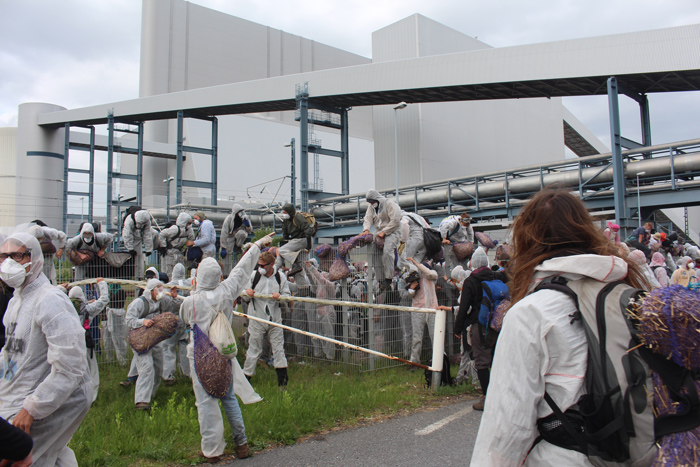 Photo credit: Tools for Action / Katherine Ball
Photo credit: Tools for Action / Katherine Ball
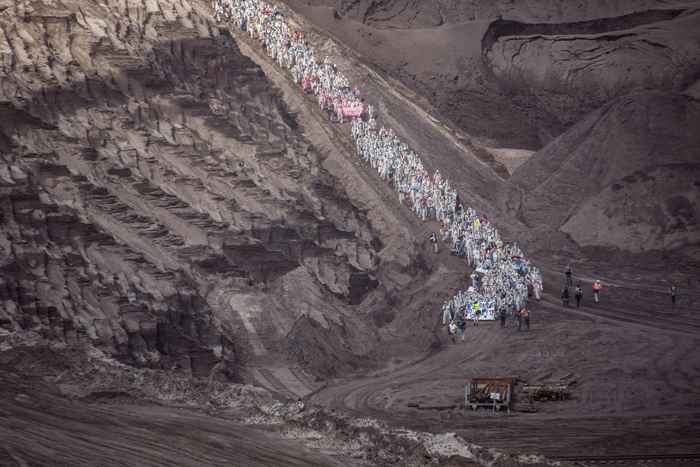 Photo credit: Reuben Neugebauer
Photo credit: Reuben Neugebauer
Vattenfall, one of the big energy corporations in Germany, wants to sell the Welzow Sud Coal Mine and Schwartz Pump Power Plant, instead of shutting them down. A new investor on the other hand would reinvest large sums into lignite mining in the area. In order to avoid catastrophic climate change, this coal has to remain in the ground. One of the largest lignite mines in Germany, the Welzow Sud Lignite Coal Mine is where the climate is being negotiated — and where demonstrators are holding the line for climate justice.
In preparation of the Ende Gelände action, a “training for trainers” occurred in March 2016, organized by 350.org, the Laboratory of Insurrectionary Imagination and Tools for Action. Representatives of climate activist groups from all over Europe learned how to organise for the action and make inflatable cubes. Every group representative then took home 2-3 rolls of silver insulation foil, tape, a fan and a battery — enough to make 11 to 16 cubes. Fifteen trainers went back to their respective countries (including Netherlands, UK, France, Denmark, and Sweden) to teach people to make inflatables. 60 cubes were made during these workshops and then brought to Germany.
At Ende Gelände all these inflatables came together for the first time. During the camp, a HQube was set up where people came to find out more about the cubes. 200 people were trained in a rolling programme of role playing trainings in the fields behind the camp in preparation for the actions
The inflatable barricade tactic creates a new visual language for direct action, where play, fun and beauty are pivotal. The technique was first developed by Tools for Action in Paris during the UN Climate Summit. The video below gives an impression of the training for trainers.
More information and instruction manuals here: www.toolsforaction.net/made-in-paris
